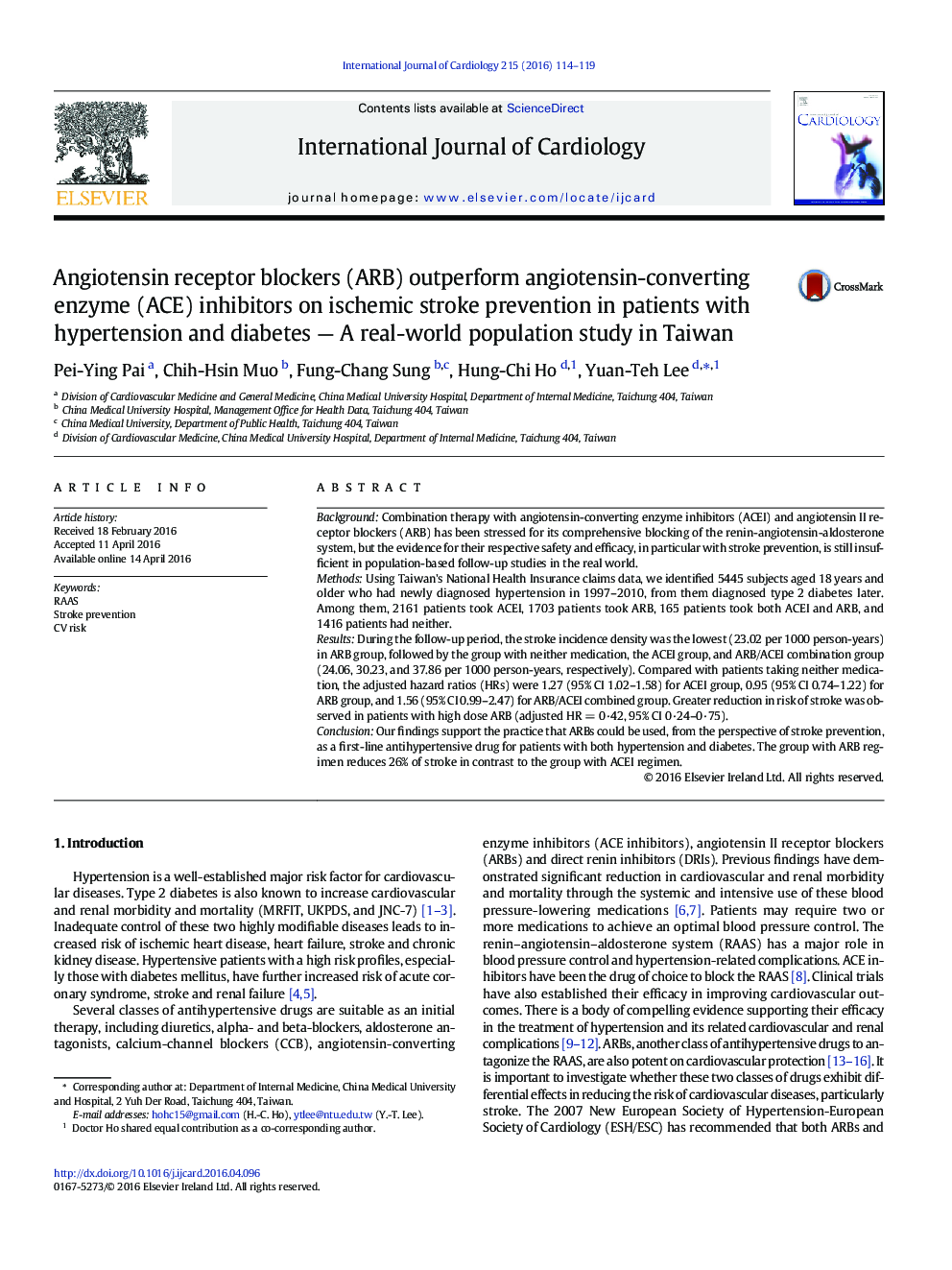| Article ID | Journal | Published Year | Pages | File Type |
|---|---|---|---|---|
| 5963880 | International Journal of Cardiology | 2016 | 6 Pages |
BackgroundCombination therapy with angiotensin-converting enzyme inhibitors (ACEI) and angiotensin II receptor blockers (ARB) has been stressed for its comprehensive blocking of the renin-angiotensin-aldosterone system, but the evidence for their respective safety and efficacy, in particular with stroke prevention, is still insufficient in population-based follow-up studies in the real world.MethodsUsing Taiwan's National Health Insurance claims data, we identified 5445 subjects aged 18 years and older who had newly diagnosed hypertension in 1997-2010, from them diagnosed type 2 diabetes later. Among them, 2161 patients took ACEI, 1703 patients took ARB, 165 patients took both ACEI and ARB, and 1416 patients had neither.ResultsDuring the follow-up period, the stroke incidence density was the lowest (23.02 per 1000 person-years) in ARB group, followed by the group with neither medication, the ACEI group, and ARB/ACEI combination group (24.06, 30.23, and 37.86 per 1000 person-years, respectively). Compared with patients taking neither medication, the adjusted hazard ratios (HRs) were 1.27 (95% CI 1.02-1.58) for ACEI group, 0.95 (95% CI 0.74-1.22) for ARB group, and 1.56 (95% CI 0.99-2.47) for ARB/ACEI combined group. Greater reduction in risk of stroke was observed in patients with high dose ARB (adjusted HR = 0·42, 95% CI 0·24-0·75).ConclusionOur findings support the practice that ARBs could be used, from the perspective of stroke prevention, as a first-line antihypertensive drug for patients with both hypertension and diabetes. The group with ARB regimen reduces 26% of stroke in contrast to the group with ACEI regimen.
